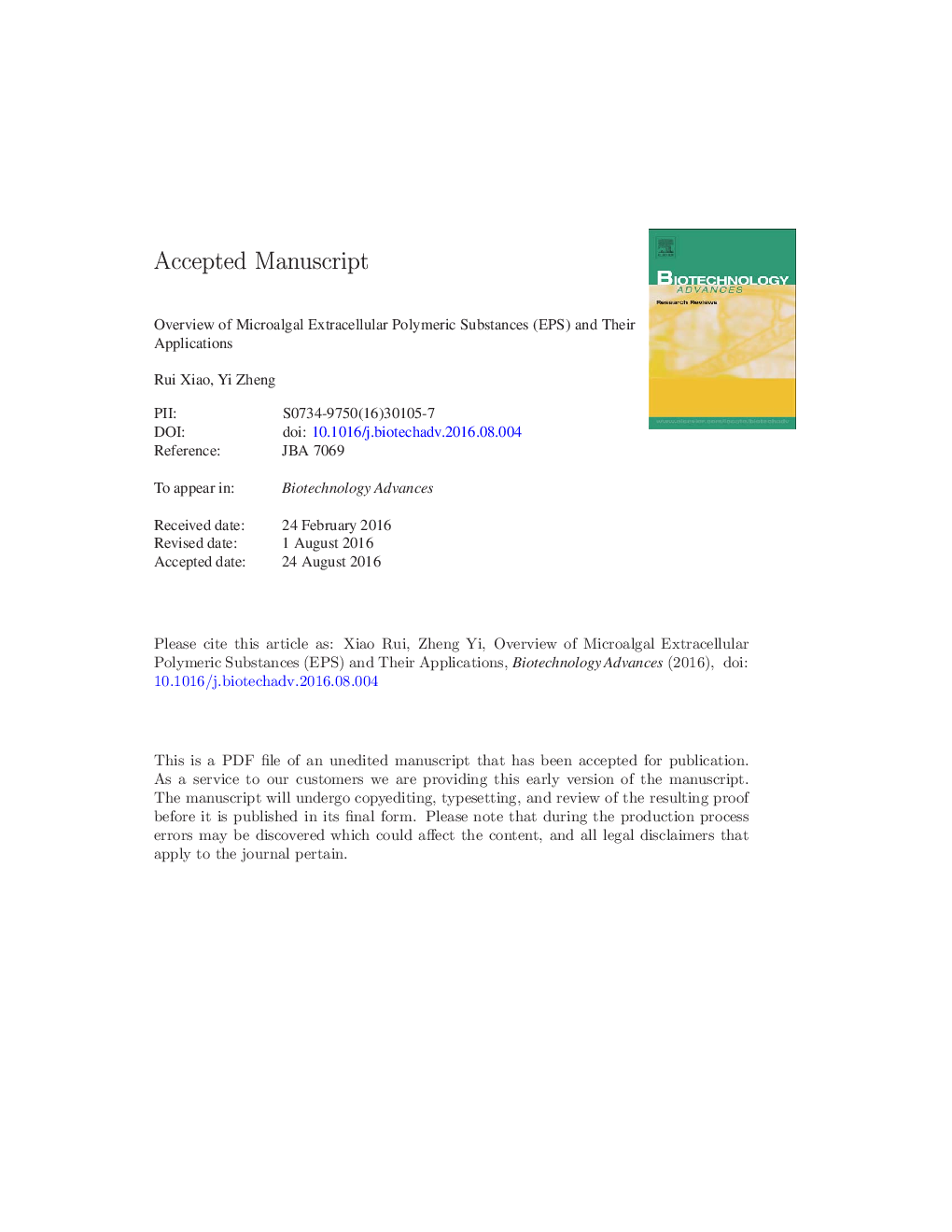| Article ID | Journal | Published Year | Pages | File Type |
|---|---|---|---|---|
| 4752541 | Biotechnology Advances | 2016 | 47 Pages |
Abstract
Microalgae have been studied as natural resources for a number of applications, most particularly food, animal feed, biofuels, pharmaceuticals, and nutraceuticals. In addition to the intracellular compounds of interest, microalgae can also excrete various extracellular polymeric substances (EPS) into their immediate living environment during their life cycle to form a hydrated biofilm matrix. These microalgal EPS mainly consist of polysaccharides, proteins, nucleic acids and lipids. Most notably, EPS retain their stable matrix structure and form a 3-D polymer network for cells to interact with each other, and mediate their adhesion to surfaces. EPS also play a role as extracellular energy and carbon sinks. They are also abundant source of structurally and compositionally diverse biopolymers which possess unique bioactivities for special high-value applications, specifically as antivirals, antitumor agents, antioxidants, anticoagulants and anti-inflammatories. Their superior rheological properties also make microalgal EPS particularly useful in mechanical engineering (e.g., biolubricants and drag reducers) and food science/engineering (e.g., thickener and preservatives) applications. The chemical composition and structure of EPS appear to correlate with their applications, but the fundamentals of such relationship are not well understood. This article summarizes previous research on microalgal EPS derived from green algae, diatoms and red algae, including compositions/functions/structure, production, and potential applications. The importance of exopolysaccharides and EPS proteins, with their particular metabolic characteristics, are also described because of their potential high-value applications. This review concludes with potential future research areas of microalgal EPS.
Related Topics
Physical Sciences and Engineering
Chemical Engineering
Bioengineering
Authors
Rui Xiao, Yi Zheng,
